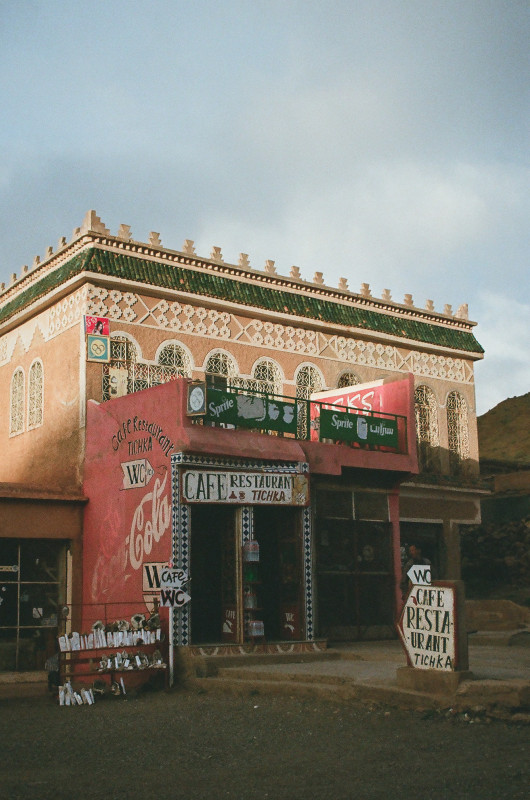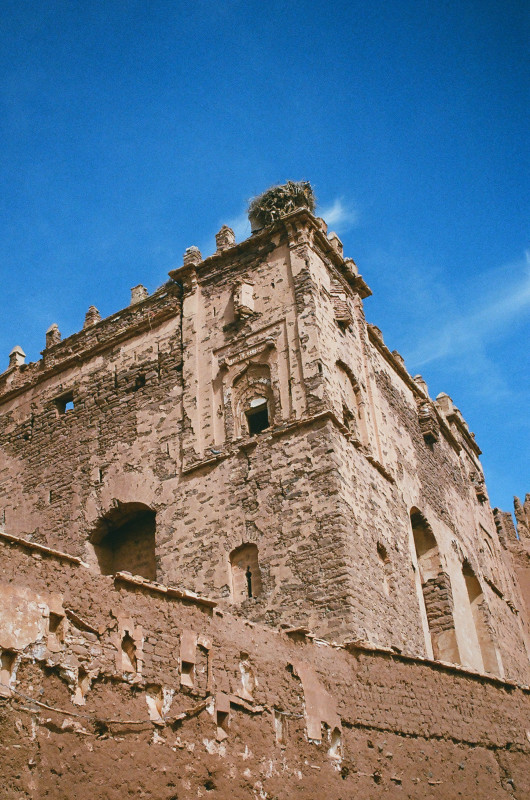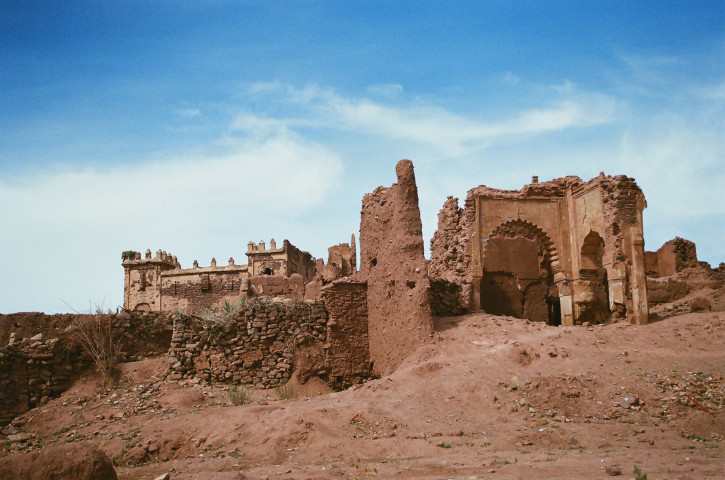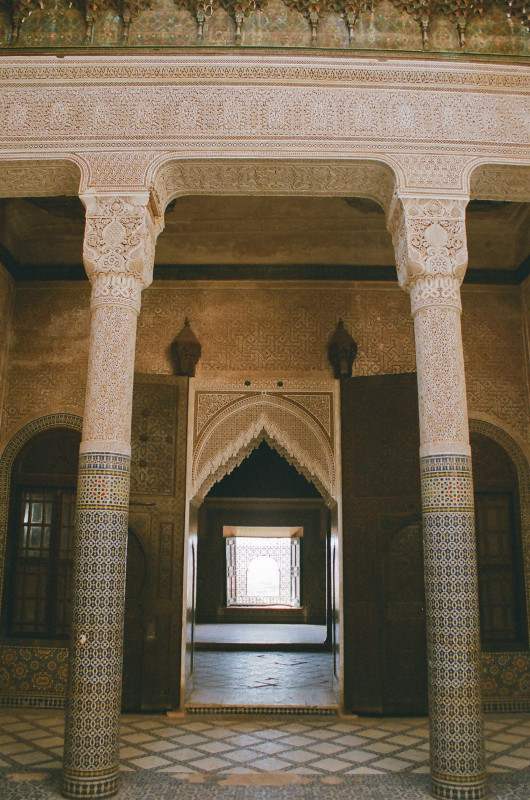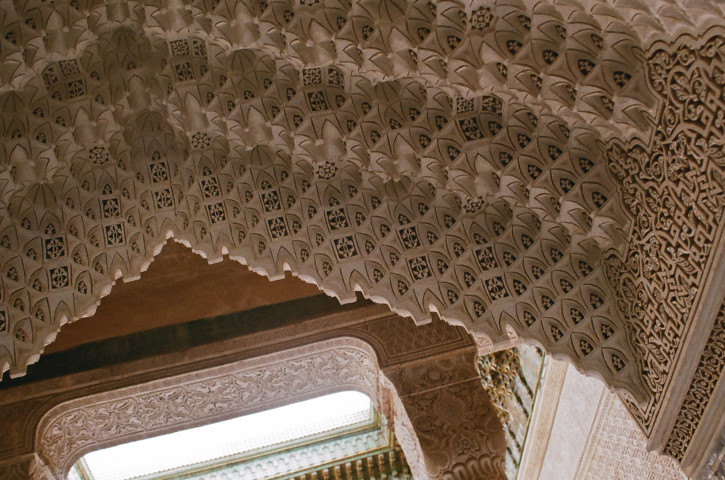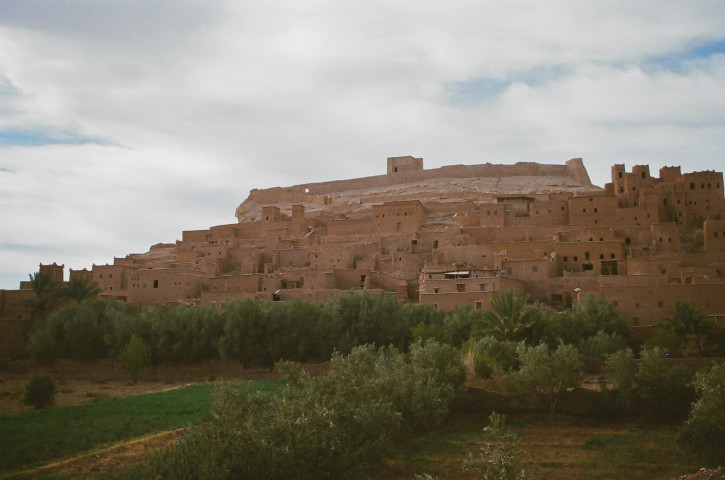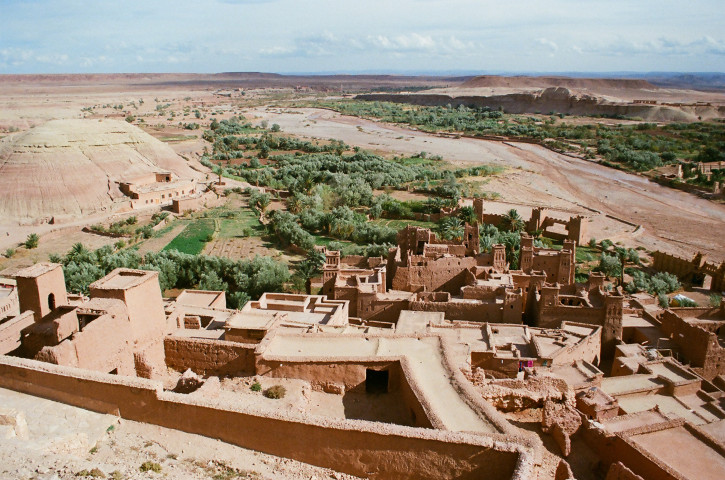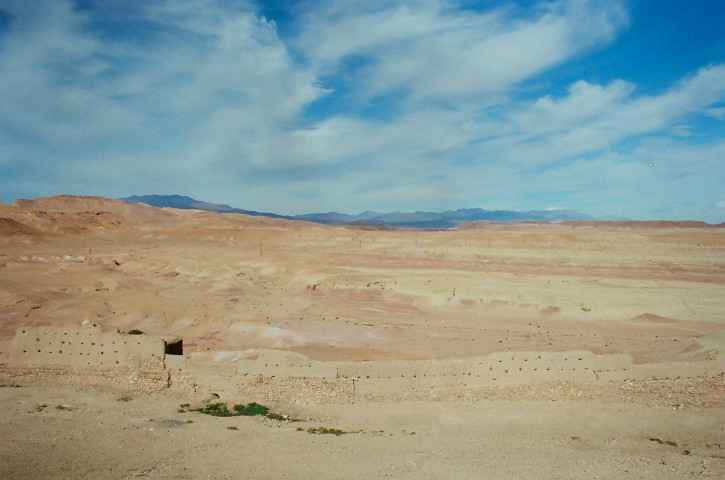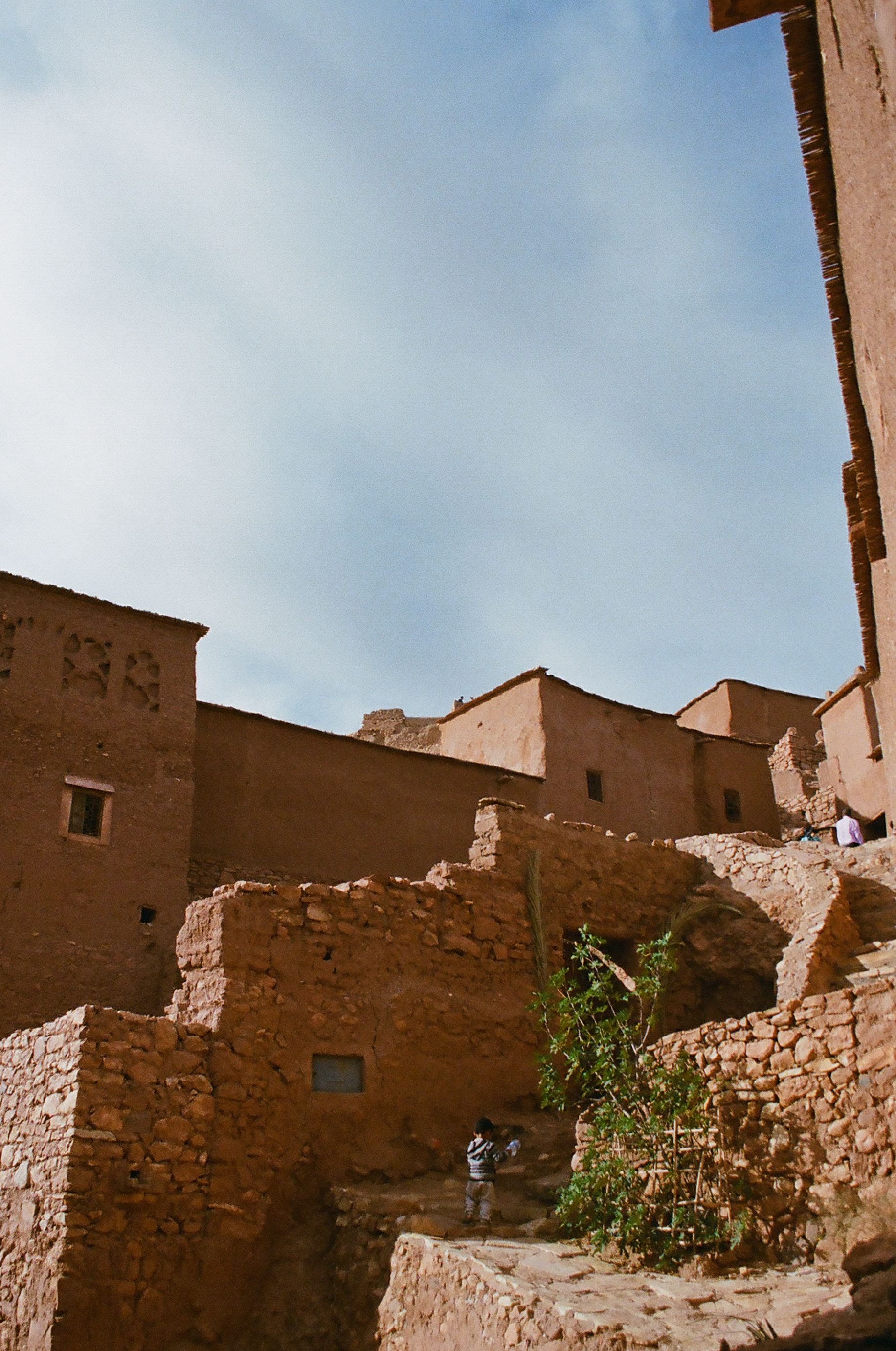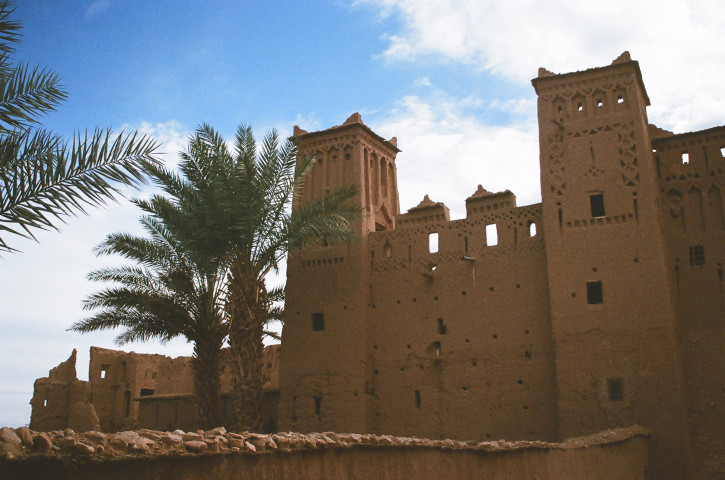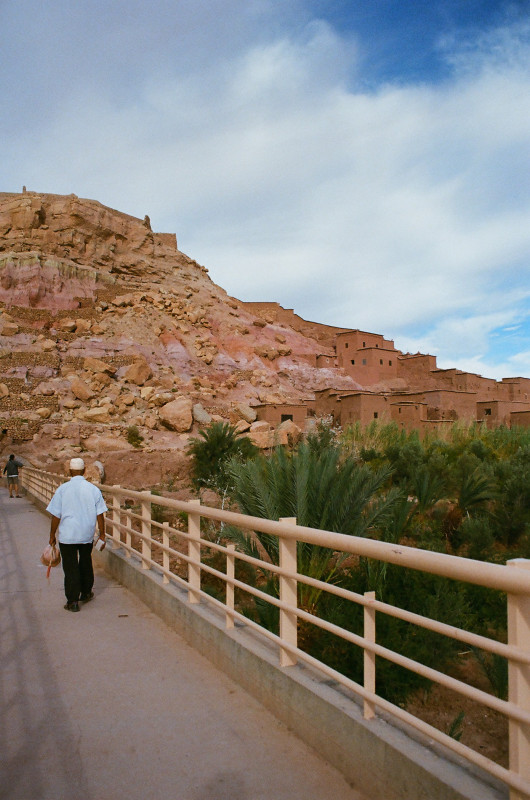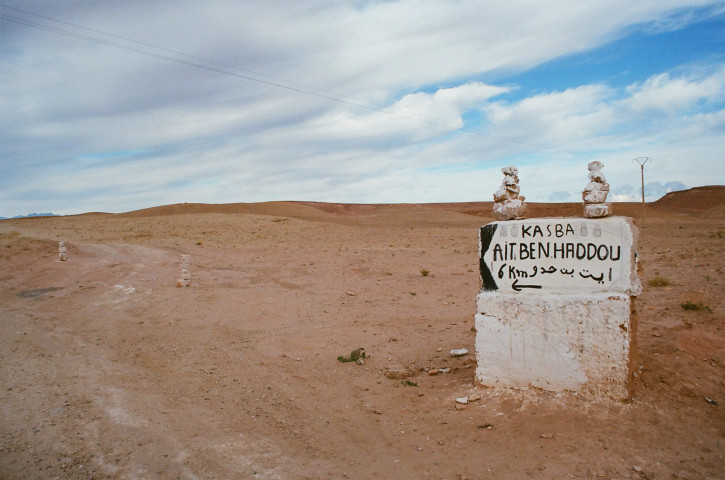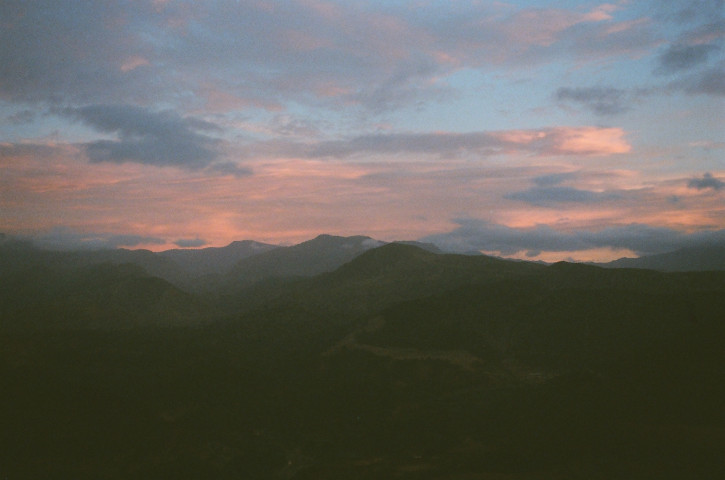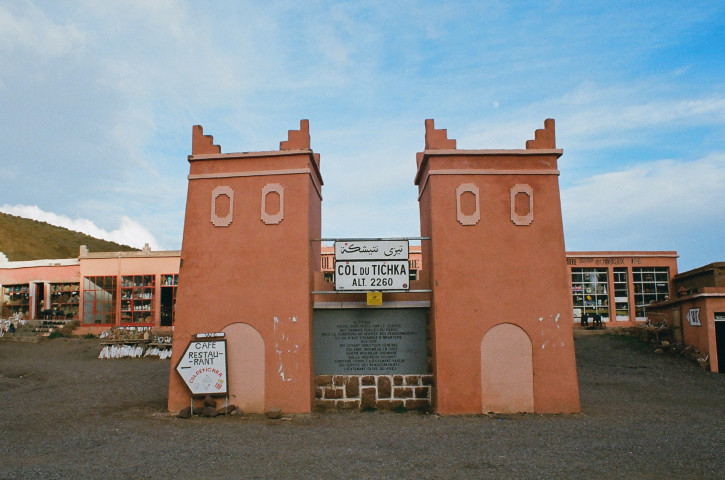 We awoke early, before anyone in the family in whose house we were staying. The streets were almost quiet. Aziz picked us up in a white 4Runner and we left the city. After driving past open fields we quickly began climbing, winding our way through the High Atlas Mountains, passing Berber villages with markets for festival sheep and charcoal and other sundries, an enormous pile of unmatched children’s shoes.
We awoke early, before anyone in the family in whose house we were staying. The streets were almost quiet. Aziz picked us up in a white 4Runner and we left the city. After driving past open fields we quickly began climbing, winding our way through the High Atlas Mountains, passing Berber villages with markets for festival sheep and charcoal and other sundries, an enormous pile of unmatched children’s shoes.
The mountains seemed to rise forever. Aziz knows these roads, which he tells us were built by German POWs at the French behest. He used to drive a bus through here, though in the winter the snow makes the roads impassible. He was once caught in a storm for three days, a bus full of people, the authorities helicoptering in food. Two babies died on board. Aziz seemed calm. Maybe it was a long time ago.
As we continued to climb, I made the mistake of looking down. The sheer cliffs, thin as paper and as sharp, form a pattern of brown on brown. Tourist shops selling geodes and marble camel figurines dot the cliffs with color and look half blown away.
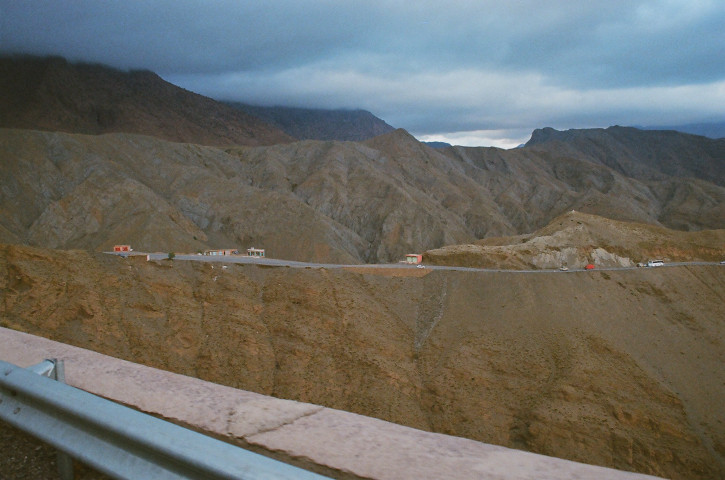 We passed Berber settlements, situated in valleys near streams, homes of mud and straw, the same color as the mountains. From on high they look like play towns, the greenery like a mirage.
We passed Berber settlements, situated in valleys near streams, homes of mud and straw, the same color as the mountains. From on high they look like play towns, the greenery like a mirage.
We passed Berber cemeteries, too. Aziz told us that the Berbers mark their graves with a blank stone, so that when someone comes to pray, he won’t know which grave belongs to his loved one and will pray for all souls buried there.
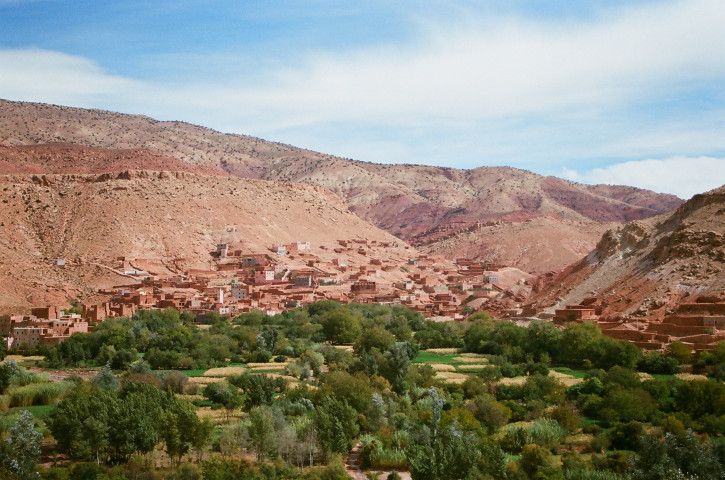
It’s dry and cold and beautiful in a threatening way. A huge salt mine looked like an opening into the heart of the desert. Two men in robes sat lazing at the entrance talking on their cell phones.
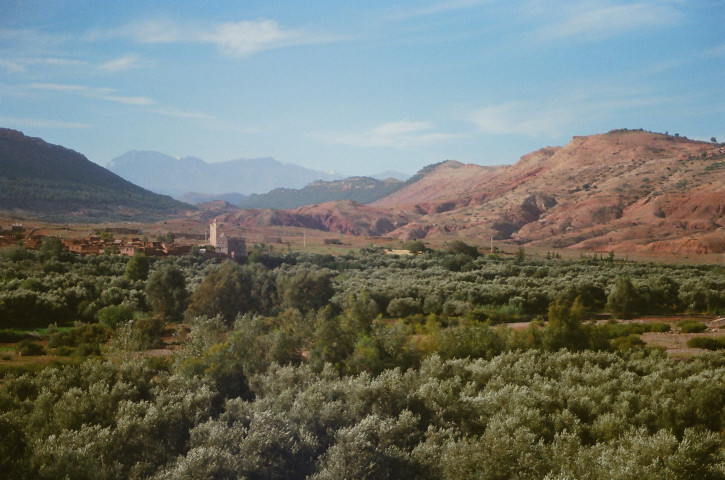 We arrived at Telouet, a kasbah of the former pasha El Glaoui. Actually three kasbahs—one built in each the 18th, 19th, and 20th centuries. Progress like the three little pigs, like a beautiful palimpsest—the first built of mud and straw and the last of imported cedar intricately painted, tadelakt floors, carrera marble, and silver. After independence in 1956 the El Glaouis were exiled for collaborating with the French. Now the kasbah is slowly sinking back into the earth, slowly unraveling itself.
We arrived at Telouet, a kasbah of the former pasha El Glaoui. Actually three kasbahs—one built in each the 18th, 19th, and 20th centuries. Progress like the three little pigs, like a beautiful palimpsest—the first built of mud and straw and the last of imported cedar intricately painted, tadelakt floors, carrera marble, and silver. After independence in 1956 the El Glaouis were exiled for collaborating with the French. Now the kasbah is slowly sinking back into the earth, slowly unraveling itself.
A Tuareg man named Rasheed showed us the grounds. He comes from the Sahara, pronounced with a Z and the emphasis on the first syllable, sibilant, like sand on wind. He told us that General Patton ate at Telouet as a guest of the pasha. The place is and feels abandoned, but I wonder what it might have felt like for Patton in the ’40s.
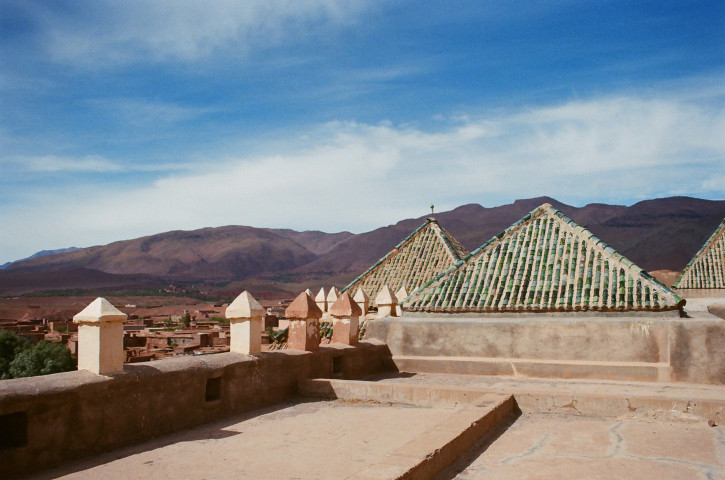
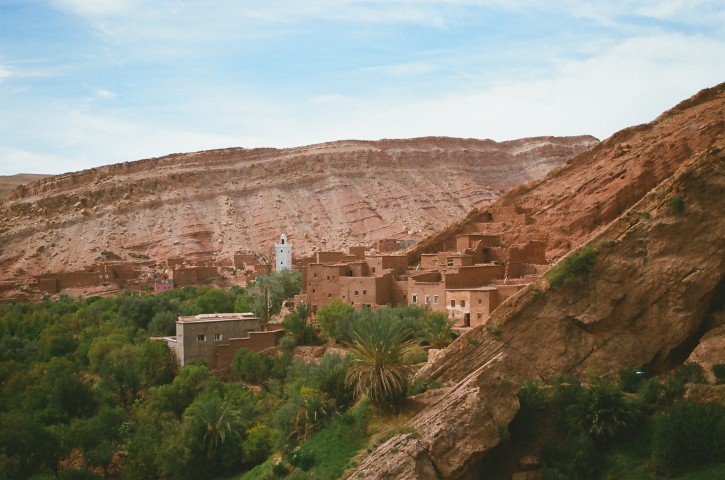
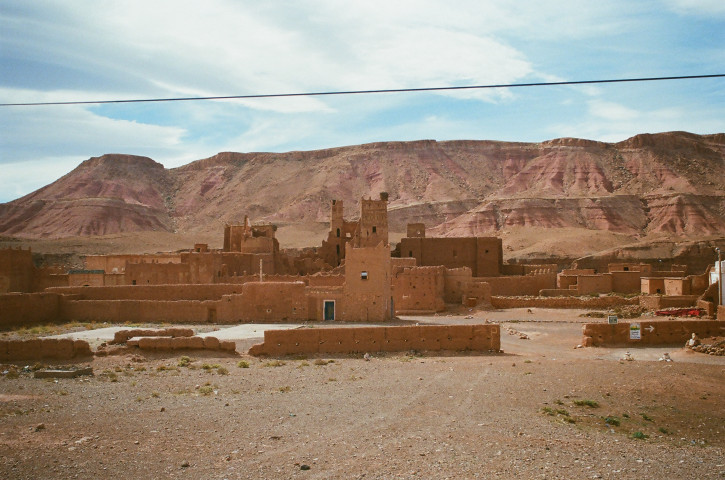 Aziz took us off road, showing off on crags and dust. The 4Runner bumped and jolted; Aziz called it a Berber massage. We stopped for lunch on the top of a cliff and ate a thick vegetable soup, our best meal in Morocco. We descended into the Ounila River valley to see Aït Benhaddou, supposedly the oldest settlement in Morocco. Everything is built of the same mixture of mud and straw that the Berber people still use. The buildings take a beating in every storm and are constantly being repaired and rebuilt, the old mud replaced by new, lines blurred between the original and the replica. The town is UNESCO protected but that doesn’t stop the rain. Only 10 families still lived in the village when we visited, though now it’s down to 8. The rest live across the river in a nearly identical settlement. UNESCO built a footbridge to span the divide, linking the old and the new, the one we marvel at and the one they live in, both identical.
Aziz took us off road, showing off on crags and dust. The 4Runner bumped and jolted; Aziz called it a Berber massage. We stopped for lunch on the top of a cliff and ate a thick vegetable soup, our best meal in Morocco. We descended into the Ounila River valley to see Aït Benhaddou, supposedly the oldest settlement in Morocco. Everything is built of the same mixture of mud and straw that the Berber people still use. The buildings take a beating in every storm and are constantly being repaired and rebuilt, the old mud replaced by new, lines blurred between the original and the replica. The town is UNESCO protected but that doesn’t stop the rain. Only 10 families still lived in the village when we visited, though now it’s down to 8. The rest live across the river in a nearly identical settlement. UNESCO built a footbridge to span the divide, linking the old and the new, the one we marvel at and the one they live in, both identical.
“The desert landscape is always at its best in the half-light of dawn or dusk. The sense of distance lacks: a ridge nearby can be a far-off mountain range, each small detail can take on the importance of a major variant on the countryside’s repetitious theme. The coming of day promises a change; it is only when the day had fully arrived that the watcher suspects it is the same day returned once again–the same day he has been living for a long time, over and over, still blindingly bright and untarnished by time.” — Paul Bowles, The Sheltering Sky
The Atlas Mountains, Morocco
October 2012
